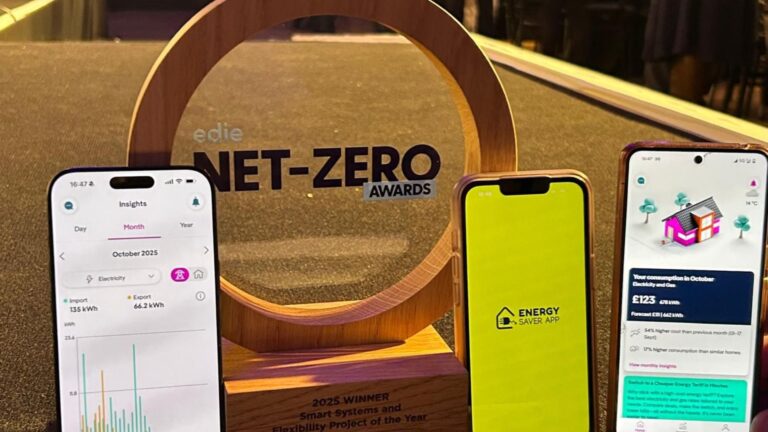Understanding half-hourly metering for businesses


Half-hourly meters present significant opportunities for businesses to save money and reduce their energy consumption. Some businesses are already required to have half-hourly meters installed. By December 2026, all energy suppliers are required to settle business energy usage on a half-hourly basis.
In this guide, SMS has broken down everything you need to know about half-hourly meters, including the basics, how half-hourly metering works, how it impacts costs and contracts, and how related legislation affects businesses and energy suppliers.
Jump to:
- Half-hourly meter basics
- How half-hourly metering works
- Cost and contracts
- P272 legislation (Ofgem metering legislation)
- Market Wide Half-Hourly Settlement (MHHS)
Half-hourly meter basics
What is a half-hourly meter?
A half-hourly meter is an energy meter that records your energy consumption every 30 minutes, or 48 times per day.
What are the benefits of half-hourly meters?
Half-hourly meters provide a range of benefits for both businesses and society at large. Half-hourly metering gives your business more accurate data about your company’s energy consumption and when energy is being used. This makes it easier for businesses to identify opportunities to save energy, lower their expenses and reduce their environmental impact.
Half-hourly meters don’t just allow businesses to identify opportunities to reduce costs by cutting consumption. By recording consumption more accurately, half-hourly meters also allow businesses to negotiate better tariffs with their energy suppliers.
Why do businesses need half-hourly meters?
Which businesses need a half-hourly meter?
Half-hourly meters are currently mandatory for businesses with high energy usage, specifically those with a Maximum Demand of 100kW or more in any half-hour period. These sites fall under Profile Class 00 and are already settled on a half-hourly basis.
Additionally, Ofgem’s P272 regulation (effective from April 2017) requires all businesses in Profile Classes 05–08 to be settled half-hourly.
From December 2026, as part of the Market-wide Half-Hourly Settlement (MHHS) reform, all suppliers must settle electricity usage on a half-hourly basis for customers with smart or advanced meters – making half-hourly data collection standard across most business premises.
How half-hourly metering works
What’s the difference between half-hourly (HH) and non-half-hourly (NHH) meters?
A non-half-hourly meter requires you to submit manual readings at intervals determined by your supplier. This interval is usually once a day or every month, but this will depend on your settings and supplier. A half-hourly meter records energy consumption every 30 minutes.
How do I know if I have a half-hourly meter?
If you’re not sure whether your business has a half-hourly meter, or you have recently moved premises, it’s easy to find out. Look at your most recent energy bill and check the Meter Point Administration Number/Supply Number (MPAN) number. If the profile class (the number in the top left box next to the S) is “00” then you have a half-hourly meter.
Do half-hourly meters require manual readings?
Unlike some older meters, half-hourly meters don’t require manual readings – they submit your data automatically, directly to your supplier. If you want to check your consumption manually, you can look at the LCD screen on the front of your meter, which will display your company’s consumption in kWh.
Cost and contracts
How much will I pay on a half-hourly meter?
Half-hourly metering allows your energy supplier to get a near real-time picture on your company’s energy consumption. Because of this, these meters have a slightly different pricing model attached, based on your individual usage.
By taking readings every 30 minutes, a half-hourly meter ensures that you’re more likely to be billed for your actual usage, rather than estimated usage within billing periods. Accurate consumption data allows businesses to negotiate more favourable business energy tariffs with their suppliers.
In the case of energy supplier Social Energy, half-hourly settlement enables them to charge their customers’ batteries when electricity is inexpensive and to release power when electricity is more expensive, therefore ensuring customers get the best deal.
What is maximum demand?
There are limits to how much energy a business can consume in any half-hourly period. This is known as the “Maximum Demand Charge.” Businesses which go over the limit will incur a charge, which will appear on their next energy bill.
What is available capacity?
Your “Available Supply Capacity” is the amount of energy which has been allocated for your site to use at any given time. If exceeded, your business will also incur additional charges.
What are triad charges?
Triads are the three half-hour peak periods that have the highest energy demand (“tri-” standing for three, and “-AD” standing for average demand). Triad charges are applicable to half-hourly metered sites if they require energy during these peak hours. These are determined by the National Grid.
P272 legislation (Ofgem metering legislation)
What is the P272 regulation?
P272 legislation is a Balancing and Settlement Code that became a mandatory Ofgem regulation, requiring all businesses with a profile class of 05 to 08 to have half-hourly meters from April 2017. This applied to legacy meter classes – MHHS will extend half-hourly settlement more widely by December 2026.
By December 2026, suppliers must settle energy usage on a half-hourly basis where smart or advanced meters are installed. Compliance with P272 allows businesses to be billed based on their actual energy consumption, rather than estimates within the billing period.
If you are required to have a half-hourly meter, you will need to appoint a Meter Operator (MOP) and a Data Collector (DC) – if you don’t, your energy supplier will pick their preferred MOP and DC for you and you may end up missing out on potential savings.
Do all businesses need to comply with P272?
Smaller businesses in the MPAN 03-04 range aren’t required to comply with P272 yet. However, they will be required to have a half-hourly meter by the December 2026 deadline.
Will P272 affect my current energy contract?
P272 will affect your energy contract, because installing a half-hourly meter will allow your supplier to base your billing on more accurate, regular readings, rather than estimated energy consumption. However, Ofgem has noted that, since P272 was introduced in 2017, many businesses have seen either no change to their bills or they have gone down.
If your business needs a half-hourly meter to comply with P272, SMS provides a combined Meter Operator (MOP) and Data Collection/Data Aggregation (DCDA) solution to help you every step of the way, ensuring that you are compliant and have access to your energy consumption data.
Market Wide Half-Hourly Settlement (MHHS)
What is Market Wide Half-Hourly Settlement (MHHS)?
MHHS is a government mandate requiring UK energy suppliers to settle trades and payments on a half-hourly basis by December 2026 (delayed from October 2025). This involves the installation of smart meters for more accurate billing.
Smart meters automatically send readings every half hour, facilitating transparent billing through data analysis. So far, early adopters have reported improved business efficiency and customer satisfaction.
In what ways does MHHS impact electricity pricing and billing for businesses?
MHHS ensures precise billing by monitoring real-time supply and demand data every half hour. This promotes transparent and dynamic pricing, offering consumers accurate billing and potential cost-saving incentives for off-peak usage.
What role does MHHS play in encouraging demand response from consumers?
MHHS empowers consumers to adjust usage patterns during peak demand periods, aligning with renewable energy availability. This demand response capability contributes to a more sustainable and efficient energy system.
Are there specific challenges or considerations for energy suppliers in transitioning to MHHS?
Transitioning to MHHS may pose challenges for energy suppliers, including the installation of smart meters and adapting to a more dynamic settlement process. Addressing these challenges is crucial for a smooth and successful transition.
How can businesses prepare for the MHHS programme and leverage its benefits?
Businesses can prepare for MHHS by ensuring the adoption of smart meters and understanding how half-hourly settlement works. Leveraging the benefits involves optimising energy usage based on real-time data and exploring dynamic tariff options.
How does MHHS align with broader sustainability goals and initiatives in the energy sector?
MHHS aligns with sustainability goals by facilitating the integration of renewables, promoting energy efficiency, and encouraging consumer participation in demand response – giving businesses the power to adjust usage patterns during peak demand periods.
Interested in our Half-Hourly Metering solution?
Find out more and get in touch at the link below.


